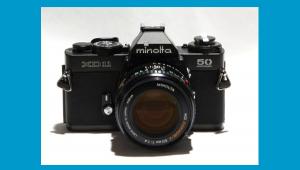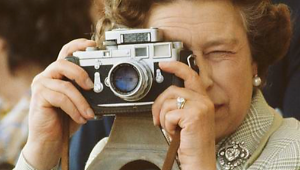Digital Convergence Waits For No Man

Take the smart phone for example. While these devices immediately offered enhanced functionality for making calls, sending email and surfing the net, early models exhibited little or no real picture-taking capabilities. In a few short years all that has changed. Enhanced features, higher resolution, improved optics, manual controls, greater storage capacity, and a broad array of effective image-editing apps have essentially enabled the smartphone to replace the pocketable point-and-shoot camera for many of us.
And while few ”serious” photographers rely on their smartphone for anything but grab shots, most of us have captured at least a few good images after stumbling upon a nice photo opportunity without a “real” camera available.
More recently, the so-called “smart watch” has begun to gain some traction, as early entrants to this category are now in the second or third versions which have transcended the description as nothing more than gadgets for the technology inclined. Available from a number of manufacturers including Samsung, Peeble, Motorola, LG, Apple and others, the latest models offer significantly better battery life, an improved user interface, high-resolution color screens, and sleek industrial design.
These devices communicate with your Android or iOS-based smart phone (and thereby your computer) via Bluetooth, enabling you to check a variety of notifications by glancing at your wrist, send and receive email, utilize voice commands, listen to music, control your television, monitor your workouts, check the weather, and more—via an ever-growing array of apps.
In fact, think back to the recent, long-awaited product unveiling by Apple, and you’ll recall that in many circles the Apple Watch received as much (or more) interest than the new laptops.
We recently had an opportunity to experiment with the Samsung Gear 2 smart watch, a second-generation model that differs from the others in that it also offers a 2-megapixel camera and the capability of making and receiving phone calls (with surprising good reception) directly from the watch—without reaching into your pocket or bag to retrieve your phone. This later feature is particularly handy when driving a car, jogging, riding a bike, etc.
As for image taking, it’s easy to snicker at the value of a two-megapixel when the smartphone in your pocket exceeds that resolution by several magnitudes. That was certainly my expectation. But you know what? It’s a lot of fun to discretely snap off a few candid street shots from your wrist without anyone being the wiser, or to do the same while dining or in other situations where it would be politically incorrect to pull out your camera (or your phone). And once I became familiar with the camera’s limitations, the results were pretty decent—even more so after opening the images on my phone and making some enhancements with one of my favorite apps.
Bottom line: Am I going to start leaving my camera at home and do all my shooting with the Samsung Gear (or my smartphone)? Of course not. But am I eager to return my review unit? Absolutely not. Like future gadgets to come, this one is a lot of fun and offers some real convenience and functionality. Like the smartphone, these smart watches are bound to evolve and it’s a category worth “watching.”
- Log in or register to post comments

















































